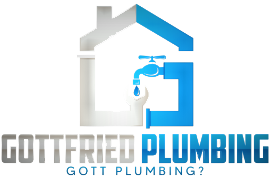Water heaters don’t last forever, but with the right care, yours can come close. If you’re in Boerne, TX, and wondering how to dodge unexpected cold showers or pricey repairs, you’re in the right place.
This guide offers straightforward steps to extend the life of your water heater. We’ll cover everything from routine maintenance, like flushing the tank and monitoring pressure, to the importance of professional installation.
So, let’s examine each step more closely to confirm that you are doing everything right to keep your hot water flowing smoothly.
1. Flush the Tank to Prevent Sediment Buildup
Flushing your water heater tank is crucial for preventing sediment buildup, which can cause overheating and reduce the tank’s lifespan. This maintenance step should be performed annually or more frequently in areas with hard water.
To flush the water heater tank:
- Attach a garden hose to the drain valve at the bottom of the water heater, directing the other end to a drain or outdoors.
- Open the drain valve and let the water flow until it appears clear, indicating that sediment has been removed.
- Close the drain valve, remove the hose, and refill the tank according to the manufacturer’s instructions.
Regular flushing guarantees that the water heater operates efficiently and prevents costly repairs. This simple maintenance task takes just a few minutes but can greatly extend the life of our water heater.
2. Test and Replace the Water Heater's Pressure Relief Valve
The pressure relief valve is a crucial safety feature on your water heater that automatically opens to release water if the internal pressure becomes too high, preventing the tank from exploding. Regular checks are essential to ensure it is functioning correctly.
To test the valve, place a bucket under the discharge pipe of your water heater and lift the lever on the pressure-relief valve gently. If water releases and then stops, the valve is working correctly. If no water is released, it’s likely that the valve is faulty and needs replacement.
To replace the valve:
- Turn off the water supply and drain the tank to remove pressure.
- Remove the old valve by unscrewing it from the tank.
- Apply sealant tape to the threads of the new valve and screw it securely into place.
- Close the shutoff valve and open a hot water faucet to expel air from the system.
- Relight the pilot on gas heaters or turn on the power for electric heaters.
Regularly testing the pressure relief valve helps maintain the safety and efficiency of your water heater. It also prevents potential hazards and extends the life of your appliance.
3. Inspect Anode Rod to Extend the Water Heater’s Lifespan
The anode rod is a critical component that prevents rust and corrosion inside your tank by reacting to water’s corrosive elements before they can damage the tank itself. Over time, the rod will decay, and if not replaced, your tank can corrode and leak, leading to early failure.
To inspect the anode rod:
- Turn off your water heater’s power and water supply.
- Drain several gallons of water from the tank to reduce the pressure and make the rod more accessible.
- Locate the rod on top of the water heater. It has a hexagonal head that can be loosened with an impact wrench and a socket.
- Once the rod is removed, inspect its condition for any signs of considerable corrosion.
- If it shows heavy wear, replace it with a new one, ensuring the threads are properly wrapped with Teflon tape for a secure fit.
4. Test the Thermal Expansion Tank to Ensure Water Heater Safety
The thermal expansion tank alleviates pressure in your water heater system by giving expanding water a place to go. High pressure can stress the tank and shorten its lifespan, so confirming that the expansion tank is working properly is essential.
Test the thermal expansion tank of your water heater by:
- Inspect the tank for leaks and ensure it maintains proper pressure without releasing water unnecessarily.
- Check all tank connections for security and damage. They should be tight and intact to maintain system integrity.
- If the tank malfunctions, drain and refill it to recalibrate its pressure settings.
- Verify that the tank is installed correctly and follows the manufacturer’s instructions. This helps avoid operational issues and prolong the water heater’s life.
5. Adjust Water Temperature to Prevent Deterioration
Regulating the temperature of your water heater can help maintain its efficiency and extend its lifespan. High temperatures can accelerate the corrosion and wear of internal components while setting the thermostat at a moderate level can help prevent these issues.
To adjust the temperature of your water heater:
- Use a thermometer to measure the hot water temperature at the tap farthest from the heater.
- Adjust the thermostat on your water heater to ensure the temperature does not exceed 120 degrees Fahrenheit, which is generally sufficient for household use and safety.
- Periodically check the water temperature to ensure it remains within the desired range. This is important as thermostats may drift over time.
- Lower the temperature setting when the house is empty for extended periods (like vacations) to save on energy costs.
Always prioritize safety when dealing with your water heater. By regulating the temperature to a safe level of 120 degrees Fahrenheit, you prevent deterioration and ensure that your household environment remains safe from the risks of scalding.
6. Install Water Heater Booster to Maximize Performance
A water heater booster increases the temperature of the water from the faucet, making hot water feel hotter. This adjustment reduces energy consumption and minimizes wear on the heater.
Water heater boosters are available in various models. When selecting one, verify it’s compatible with your existing water heater system. Follow the manufacturer’s instructions to connect the booster to your pipes and integrate it with your thermostat. Once installed, a water heater booster can reduce energy consumption while maintaining the desired water temperature, contributing to a longer-lasting water heater.
7. Monitor Water Heater Pressure to Prevent System Overload
Irregular water pressure can put undue stress on the tank, leading to potential failures and leaks. We recommend checking the water pressure regularly to keep your water heater running smoothly.
To manage the water heater pressure:
- Install a pressure regulating valve (PRV) on your main water line to verify that the city water pressure is below 80 psi.
- Check thermal pressure when the water heater heats up and cools down. When no one is using hot water, thermal pressure can exceed 80 psi, so consider installing a thermal expansion tank to relieve this pressure.
- Open and test the pressure relief valve. Replace the valve if water is not released.
- Replace the Temperature and Pressure (T&P) valve if it’s not working properly.
- Monitor your home’s water pressure regularly to verify it remains within the safe range.
8. Choose Professional Water Heater Installation for Reliable and Durable Performance
Proper installation of a water heater ensures reliable and long-lasting performance. While DIY installation might seem feasible, it often falls short due to the complexities involved. Professional installers ensure that all connections are secure, the unit is correctly positioned for safety, and the size is appropriate for your home’s needs.
They are also up-to-date with local regulations, including permits and requirements like thermal expansion tanks. Moreover, professionals can properly insulate your system to prevent heat loss and avoid efficiency issues, especially in colder climates.
Contact Gottfried Plumbing at (830) 331-2055 if you need professional water heater installation. Our skilled team will provide thorough and meticulous installation tailored to your home’s specific needs.


